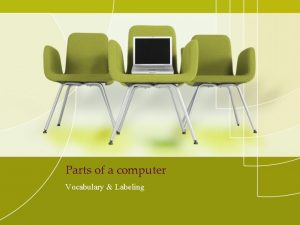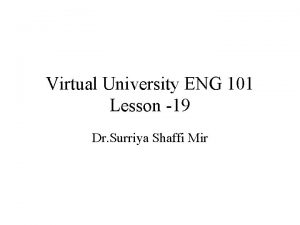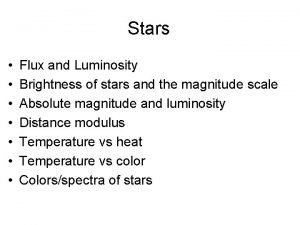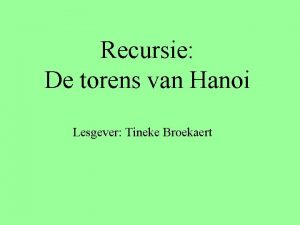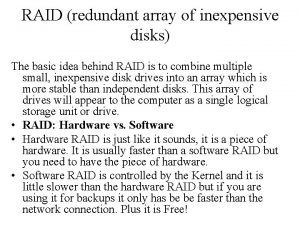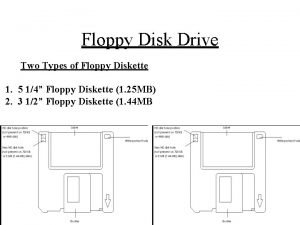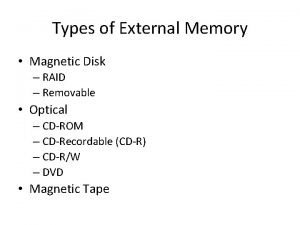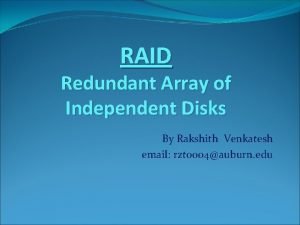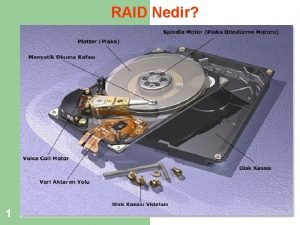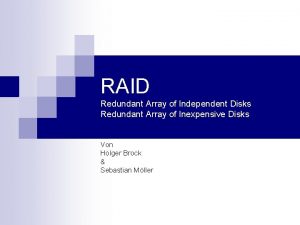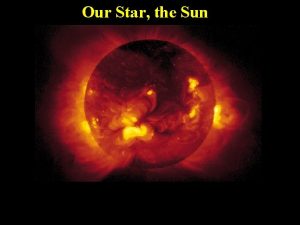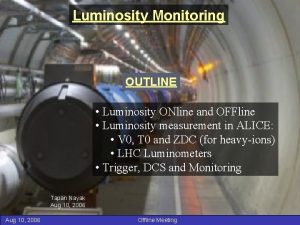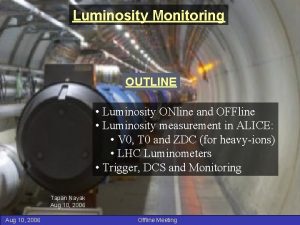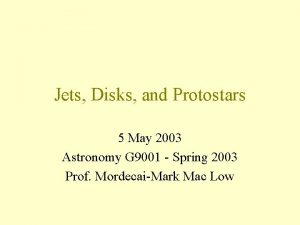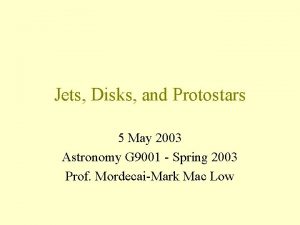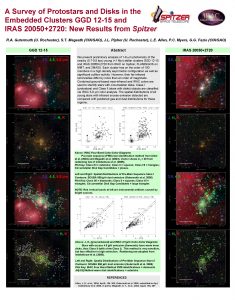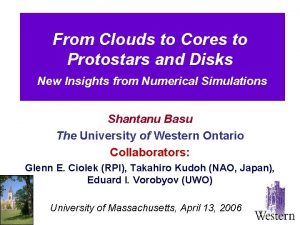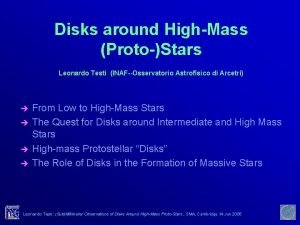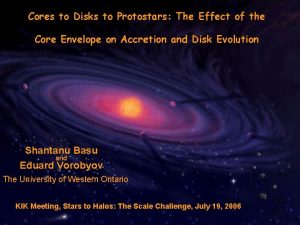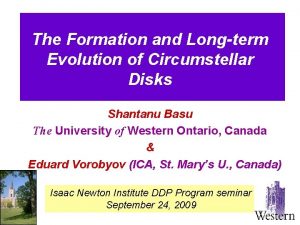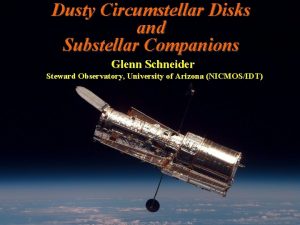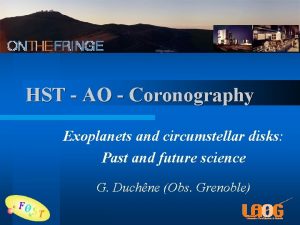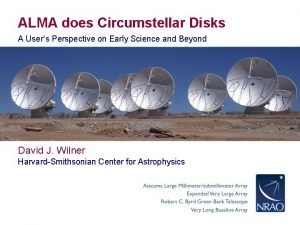Properties of Intermediate Luminosity Protostars and Circumstellar Disks















- Slides: 15

Properties of Intermediate. Luminosity Protostars and Circumstellar Disks in OMC-2 J. Adams 1, T. Herter 1, M. Osorio 2, T. Megeath 3, E. Macias 2, W. Fischer 3, B. Ali 4, N. Calvet 5, P. D’Alessio 6, J. De Buizer 7, G. Gull 1, C. Henderson 1, L. Keller 8, M. Morris 9, I. Remming 10, J. Schoenwald 1, R. Shuping 7, T. Stanke 11, A. Stutz 12, W. Vacca 7 1 Cornell, 2 IAA, 3 U. Toledo, 4 IPAC, 5 U. Mich, 6 UNAM, 7 SOFIA-USRA, 8 Ithaca Coll. , 9 UCLA, 10 U. Rochester, 11 ESO, 12 MPIA

FORCAST Overview • Facility Instrument for SOFIA • Dual-Channel 256 x 256 Camera w/ Si BIB arrays – 5 -25 m with Si: As array – 25 -40 m with Si: Sb array • 0. 77 arcsec/pixel (rectified) over 3. 4 3. 2 arcmin FOV • Diffraction-limited imaging for > 15 µm • Selectable Filters in 5 -40 m range • Easily accommodates grisms for spectroscopic capability 2/29/2012 SCTF: SOFIA/FORCAST OMC-2 2

Why Study OMC-2? N • OMC-2 is a nearby, active site of star formation E 5’ – It is one of the most luminous regions in Orion – Contains numerous protostars and young stars with circumstellar disks (Nielbock et al. 2003, Peterson & Megeath 2008) – Contains cold dusty cores often associated with stellar components and submm emission (Chini et al. 1997, Lis et al. 1998) – Shock activity seen in 3. 6 cm VLA observations (Reipurth et al. 1999) and 2. 12 µm H 2 line emission (Yu et al. 1997) – Possible triggered star formation from outflow activity (Shimarjiri et al. 2008) 2/29/2012 NGC 1977 OMC-3 OMC-2 M 43 M 42 Spitzer/IRAC images Peterson & Megeath (2008) SCTF: SOFIA/FORCAST OMC-2 3

Observations • OMC-2 was observed by SOFIA during Short Science in Nov. Dec. 2010 during 2 different Orion flight legs – 19/37, 19/31, 37 µm – 43, 000 ft. altitude • 2 pointing fields covering 3. 4’ x 3. 2’ FOVs • 5 x 30 sec integrations in C 2 N and C 2 NC 2 modes • Include Spitzer/IRAC/MIPS data at 3. 6, 4. 5, 5. 8, 8. 0, 24 µm (Megeath et al. 2005, Peterson & Megeath 2008) • Include Herschel/PACS photometry at 70 and 160 µm (HOPS; Fischer et al. 2010) • Include ESO APEX SABOCA and LABOCA photometry at 350 and 850 µm 2/29/2012 SCTF: SOFIA/FORCAST OMC-2 4

FORCAST FOVs N 3 NGC 1977 E IRS 4 N OMC-3 IRS 3 OMC-2 IRS 1 FIR 6 d M 43 M 42 2/29/2012 SCTF: SOFIA/FORCAST OMC-2 Spitzer/IRAC 3. 6, 4. 5, 8. 0 µm Megeath et al. (2005), Peterson & Megeath (2008) Gately et al. (1974) Chini et al. (1997) 5

OMC-2 at 4. 5 µm, 19. 7 µm, and 37. 1 µm (IRS 2) (IRS 4 N) (FIR 4) (IRS 1) (IRS 3) 2/29/2012 SCTF: SOFIA/FORCAST OMC-2 6

3. 6µm SOF 1 SOF 2 SOF 4 4. 5µm 5. 8µm SOF 3 SOF 5 SOF 6 SOF 7 SOF 8 8. 0 µm SOF 3 2/29/2012 24µm SOF 3 SCTF: SOFIA/FORCAST OMC-2 Spitzer Images 7

Herschel Observations * Courtesy HOPS team (Fischer et al. 2010) 70 µm 160 µm SOF 1 SOF 2 SOF 3 SOF 4 SOF 5 SOF 7 SOF 8 2/29/2012 SCTF: SOFIA/FORCAST OMC-2 8

1. 3 mm Continuum Chini et al. (1997) 2/29/2012 SCTF: SOFIA/FORCAST OMC-2 9

VLA Sources (3. 6 cm) overlay Reipurth et al. 1999 1. 3 mm map from Chini et al. 1997 SOF 2 SOF 3 2/29/2012 SOF 5 SCTF: SOFIA/FORCAST OMC-2 10

Multi-wavelength Correlation Adams et al. (2012) 2/29/2012 SCTF: SOFIA/FORCAST OMC-2 11

Models Envelope Models • Sheet collapse (Hartmann, Calvet & Boss 1994) • Outflow cavity • Grain Mixture: Silicates, graphite, troilite, water ice • 0. 005 – 0. 3 µm grain sizes • Dust opacity values based on class I object L 1551 (Osorio et al. 2003) • Temperature and SED profiles are calculated from radiative transfer codes (Kenyon, Calvet, and Hartmann 1993). • External heating modeled as ~30 K single temperature blackbody Accretion Disk Models (D’Alessio 1999, 2006) • Flared geometry • Temperature distribution is determined by viscous dissipation and stellar irradiation • Grain growth and grain settling to midplane 2/29/2012 SCTF: SOFIA/FORCAST OMC-2 12

2 MASS IRAC & MIPS IRS 60 Lsun 300 Lsun 50 Lsun 20/60 Lsun TIMMI 2 (Nielbock et al. 2003) FORCAST Herschel APEX IRAM (Chini et al. 1997) 40 Lsun 2/29/2012 15 Lsun SCTF: SOFIA/FORCAST OMC-2 7/130 Lsun 13

Modeling Results Adams et al. (2012) 2/29/2012 SCTF: SOFIA/FORCAST OMC-2 14

Conclusions • SOFIA/FORCAST has detected eight intermediate-luminosity (20 – 300 Lsun) sources in OMC-2 – Modeling suggests that four are protostars – Two sources are likely star+disks – Two sources are binary systems containing a protostar and a star+disk system. • SOFIA’s unique wavelength and resolution capabilities are a critical component to multiwavelength characterization of such objects in nearby, luminous star forming regions 2/29/2012 SCTF: SOFIA/FORCAST OMC-2 15
 Label computer parts
Label computer parts Disks and tapes can be stored ------- a library. eng101
Disks and tapes can be stored ------- a library. eng101 Magnitude flux equation
Magnitude flux equation Tower of hanoi 4 disks
Tower of hanoi 4 disks Raid redundant array of independent disks
Raid redundant array of independent disks Floppy disk
Floppy disk Output device
Output device Fixed-head magnetic disk storage
Fixed-head magnetic disk storage Redundancy array of independent disk
Redundancy array of independent disk Probability learning objectives
Probability learning objectives Duffy's mvp levels
Duffy's mvp levels Redundant array of independent disks
Redundant array of independent disks Holger brock
Holger brock Conquest data disks
Conquest data disks Mizar luminosity
Mizar luminosity What is solar luminosity
What is solar luminosity
